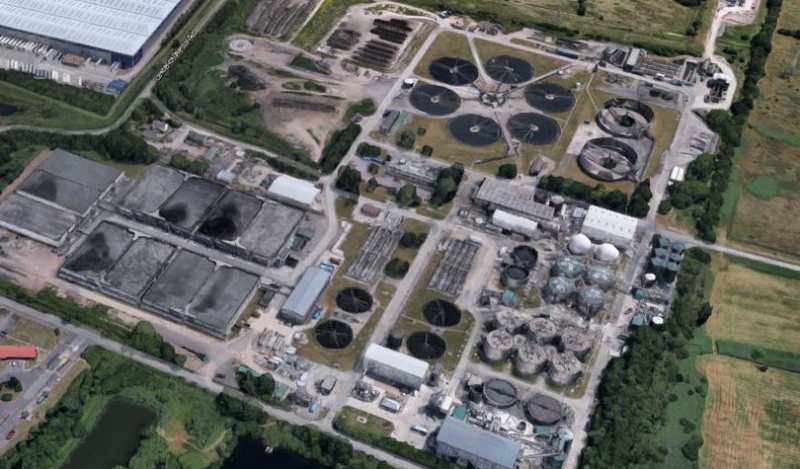A drone was destroyed when it crashed into a wind turbine at a sewage treatment works in an ‘extremely rare’ incident. The Air Accidents Investigation Branch carried out an investigation into the incident at the Bristol sewage treatment works in Avonmouth on March 5 this year.
The report by the AAIB said the drone – a DJI Phantom 4 – was carrying out an aerial survey of the works when it flew into a wind turbine, the height of which the pilot had misjudged
A Wessex Water spokesman said the drone was operated by an experienced pilot and that no damage was caused to the turbine.
It says in the report:
“The unmanned aircraft system (UAS) was being used to conduct an aerial survey of a sewage treatment works that contained four wind turbines in the survey area.
“The pilot was using the NATS Drone Assist app1 as part of the flight planning and risk assessment of the flight; however, the app did not mention the wind turbines, so the pilot looked up “windturbine height” on the internet which returned a height of 328 ft.
“A search was also made for any guidance material on flying in the vicinity of wind turbines, but none was found.
“The pilot had been made aware of aeronautical charts during UAS pilot training but did not use them when planning and risk assessing a flight.”
The report states that the operator’s permission limited the height of the flights to 400 ft above the surface.
“Therefore, the pilot decided to fly the aircraft at 400 ft above the ground to provide clearance of 72 ft between it and the top of the turbine blades, which the pilot assessed to be a sufficient distance,” the statement continued. “However, the aircraft was destroyed when it flew into a wind turbine which had a height of 413 ft above the ground.”
The report stated the commander, aged 20, had a total of 300 hours’ flying experience.
It concluded: “Having been reminded of the obstacle and airspace information available on aeronautical charts or flight planning apps that have access to this information, the operator has amended its flight planning and risk assessment procedures to include reference to these.”
A Wessex Water spokeswoman said a drone, operated by an experienced pilot, was taking aerial surveys of their Avonmouth site when it collided with a wind turbine.
He added:
“No damage was caused to the turbine and the incident was recorded with the Air Accidents Investigation Branch (AAIB).
“While incidents of this nature are extremely rare, the AAIB has reminded us about the need to refer to obstacle and airspace information for future flights.”
Source: Bristol Live

